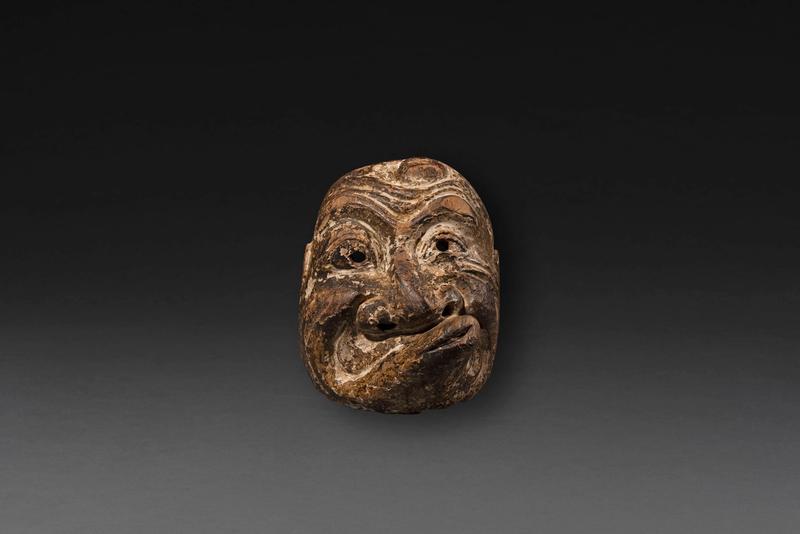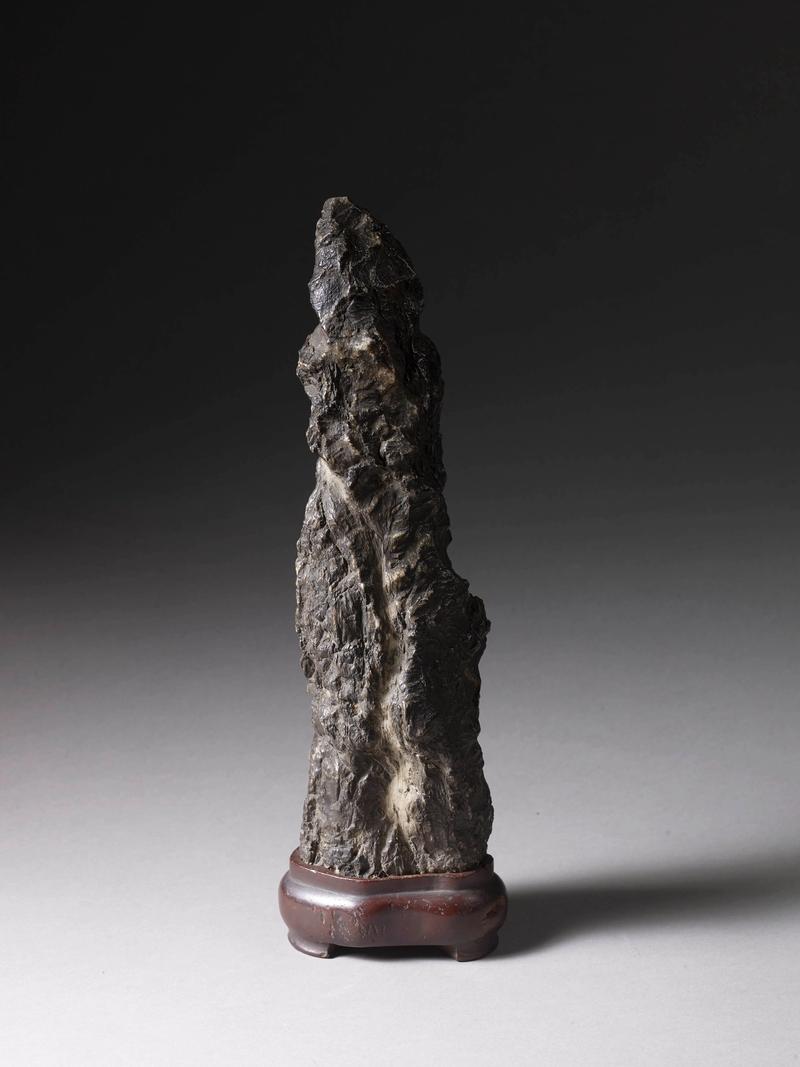A bronze flower vessel of mimikuchi (ear-mouth) form with a band of lappet decoration to the neck.
Japan, 19th century, Meiji period.
Mimikuchi (ear-mouth), is a type of bronze vessel which takes its name from its shape, it appears to have no Chinese antecedent and therefore is believed to be of purely Japanese design. The earliest known examples appear in a 16th century publication on flower arranging by Senkō II, the famous master of Ikebana (flower arranging).
For a mimikuchi vase with similar decoration see: Joe Earle, Flower Bronzes of Japan, (London, 1995), p. 80, pl.41.
Works of Art

A wood Noh mask of Koomote

A bronze flower vessel

A Suiseki (viewing stone)

A kakebotoke

A ceramic te-aburi (hand warmer)

A wood Kyōgen mask of Usobuki

A suiseki (viewing stone) of vertical form with a natural striation resembling a waterfall, with wood stand

A Chinese bronze censer

A Tokoname storage jar

A ceramic vase by Makuzu Kōzan II

A Suiseki (viewing stone)

A Suiseki (viewing stone)

A Chinese Suiseki (viewing stone)

A bronze flower vessel of mimikuchi

A pottery kake hanaire (hanging flower vessel)

A red lacquer Kamakura-bori dai-kogo (incense box)

A Lacquered Shield

A bronze brazier

A bronze hanging flower vessel

A black lacquer bon (tray)

A bronze brazier

An iron nyoi

A Tokoname storage jar





